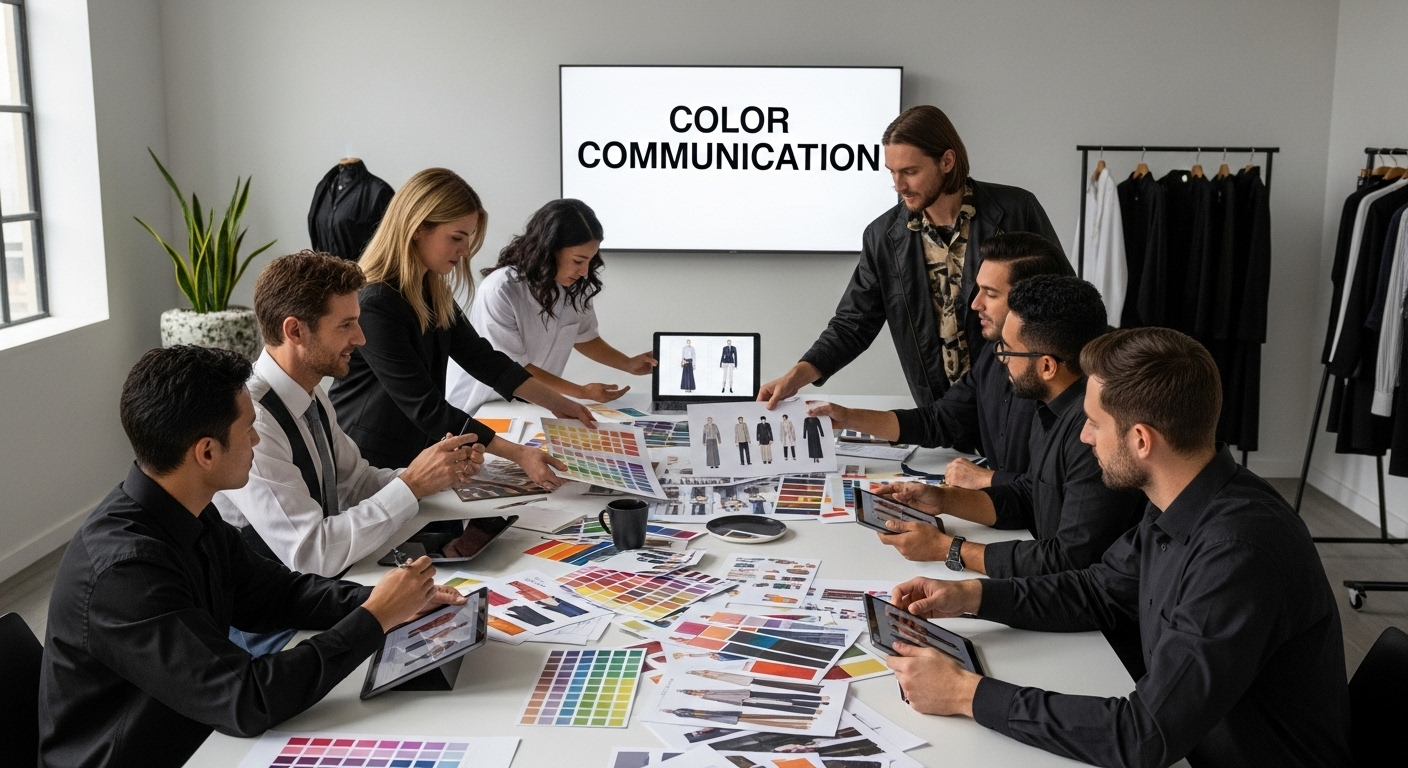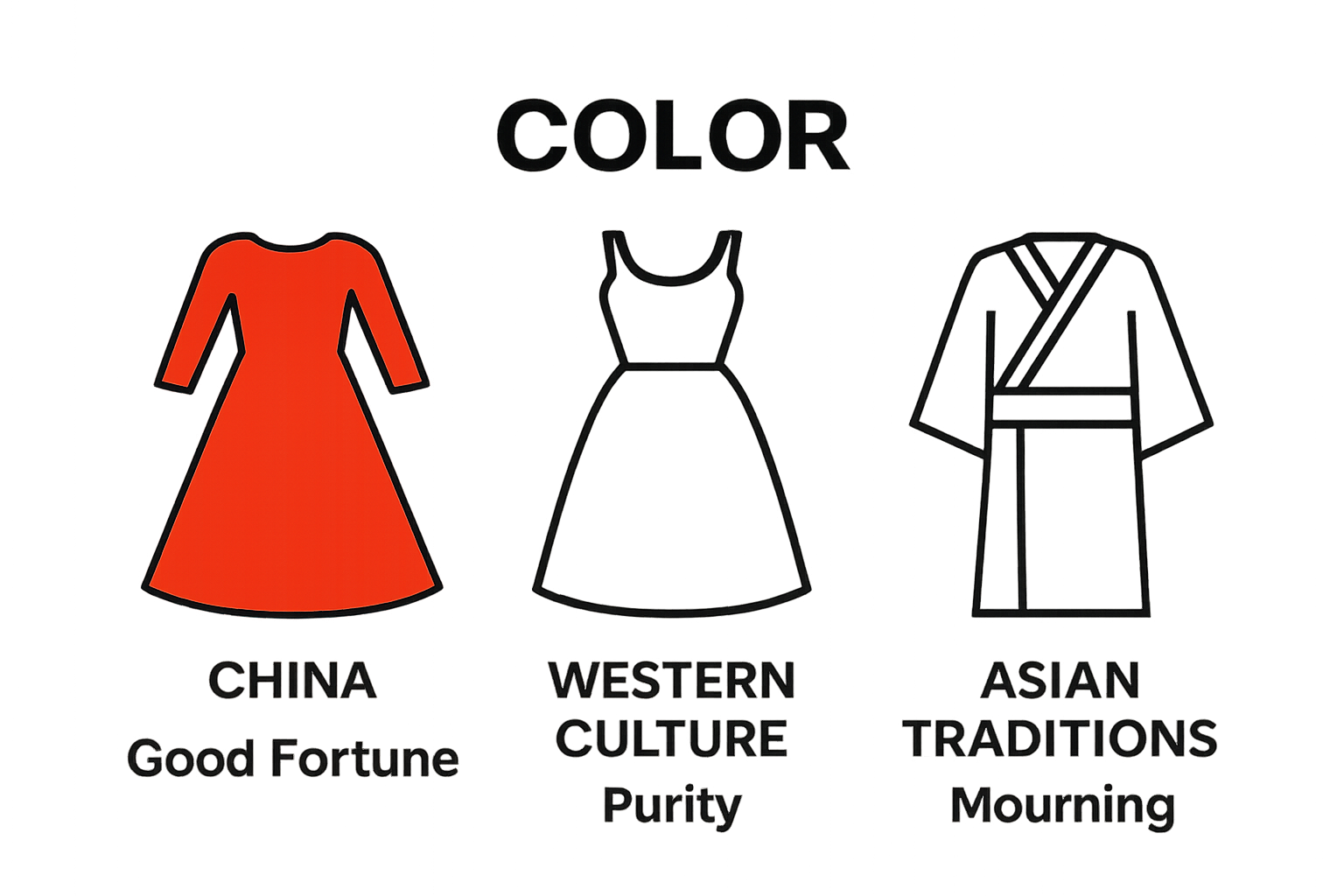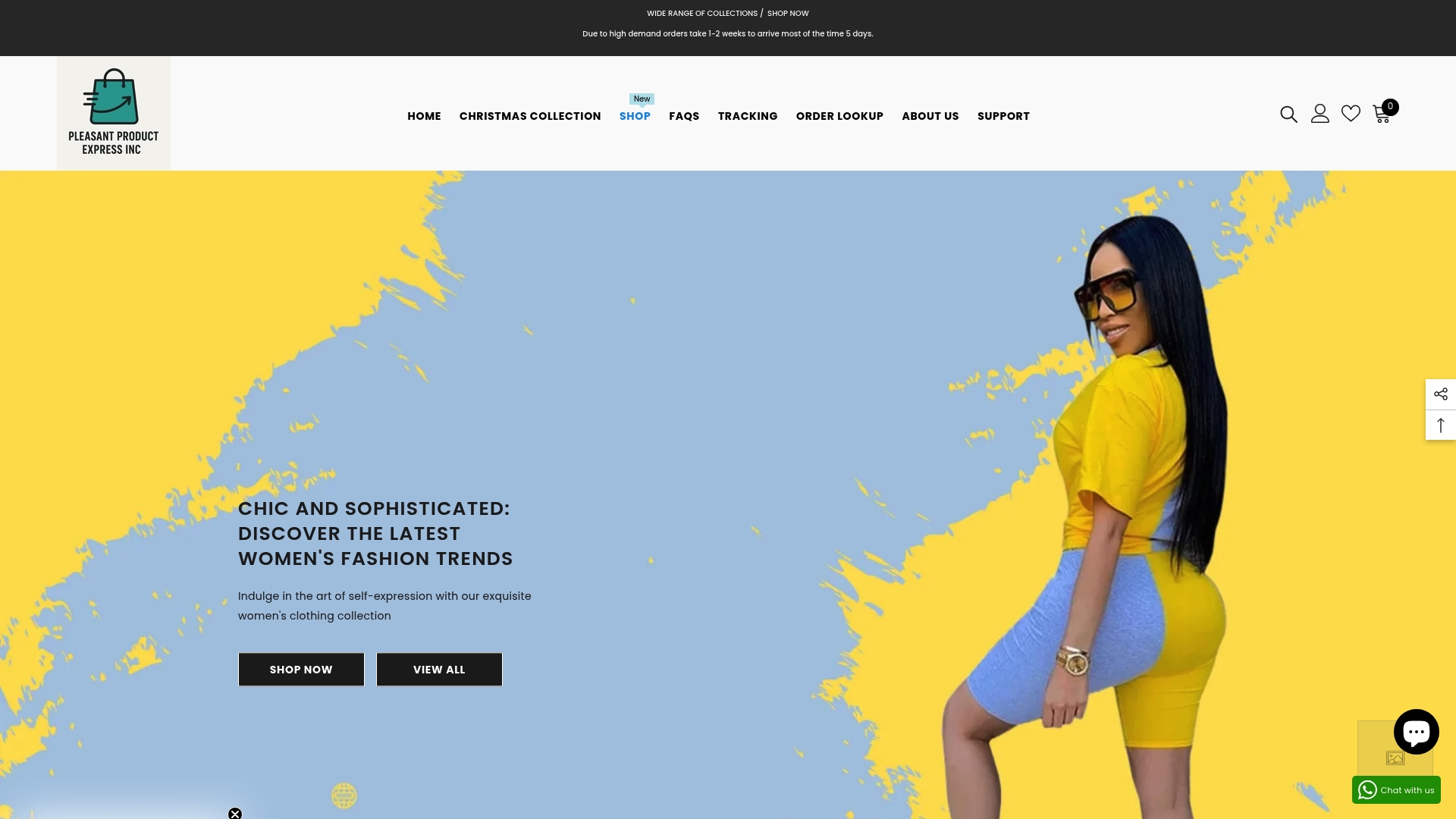Understanding the Role of Color in Style Choices
Color is everywhere you look and it does more than just decorate our lives. Psychologists have found that blue clothing can actually make you seem more trustworthy and professional. That probably sounds ordinary at first glance but color is more powerful than people realize. Wearing a certain shade or even mixing bold colors can completely change how strangers read your mood, your confidence and even your social status.
Table of Contents
- What Is Color And Its Impact On Style?
- The Psychological Effects Of Color In Fashion
- How Color Enhances Visual Communication In Design
- Cultural Significance Of Color In Style Across The World
- Current Trends And Innovations In Color Usage
Quick Summary
| Takeaway | Explanation |
|---|---|
| Color influences emotions and perceptions. | Different colors evoke specific emotional responses, impacting how we feel and how others perceive us. |
| Color choices reflect personality and mood. | Your outfit’s color palette communicates personal traits and emotional states, such as confidence or gentleness. |
| Cultural context shapes color interpretation. | Colors can signify vastly different meanings across cultures, affecting their social impact and symbolism. |
| Color enhances communication in design. | Well-chosen colors can convey messages and emotions quicker than words, engaging audiences more effectively. |
| Sustainability is driving color trends. | Modern trends prioritize eco-friendly practices in color usage, appealing to consumers’ desire for sustainable fashion. |
What is Color and Its Impact on Style?
Color represents an extraordinary visual communication tool that transcends mere aesthetic preferences, profoundly influencing personal style and social perception. At its core, color is a visual experience created by how light wavelengths interact with our eyes, translating into specific hues that carry significant psychological and emotional implications.
The Psychological Dimensions of Color
Colors are not just visual sensations but powerful communicators of mood, personality, and intent. Research from Psychology Today reveals that different colors trigger specific emotional responses and psychological reactions. For instance, warm colors like red and orange often evoke feelings of energy and passion, while cool colors like blue and green suggest calmness and stability.
In personal style, color choices become a form of nonverbal communication. When you select a particular color palette for your outfit, you are making a statement about your personality, mood, and potential social positioning. A vibrant red might signal confidence and assertiveness, while soft pastels could communicate gentleness and approachability.
Color as a Personal Expression
Color selection in style goes beyond mere visual appeal. It serves as a powerful tool for self-expression and personal branding. Some individuals deliberately use color to challenge social norms, express cultural identity, or signal professional aspirations. By understanding color psychology, you can strategically leverage hues to communicate your unique narrative.
Interested in exploring how fashion can be a form of personal storytelling? Read our guide on understanding the role of fashion self-expression to dive deeper into this fascinating aspect of personal style.
The Psychological Effects of Color in Fashion
Fashion color psychology explores how different color selections impact human emotions, perceptions, and behaviors. Beyond aesthetic appeal, colors serve as powerful psychological triggers that communicate complex messages about personality, mood, and social dynamics.
Color Perception and Emotional Responses
Research from the Journal of Fashion Marketing and Management demonstrates that color perception is deeply rooted in individual psychological and cultural experiences. Certain colors can instantly evoke specific emotional states and trigger immediate psychological responses. For instance, blue often communicates trustworthiness and professionalism, making it a popular choice in corporate attire, while green suggests harmony and balance, frequently associated with natural and wellness-oriented fashion.
Cultural and Personal Color Interpretations
Color interpretations are not universal but vary significantly across different cultural contexts. What signifies positivity in one culture might represent mourning in another. Personal experiences, regional traditions, and individual psychological makeup all contribute to how we perceive and respond to specific colors in fashion.
Professional stylists understand that color selection is a nuanced art form requiring sensitivity to individual preferences and cultural backgrounds.
Below is a comparison table summarizing the emotional and psychological effects of different colors as discussed in the article.
| Color | Common Associations | Typical Psychological Effects |
|---|---|---|
| Red | Confidence, passion, energy | Boosts energy, signals assertiveness |
| Orange | Warmth, vibrancy, enthusiasm | Evokes excitement, stimulates activity |
| Blue | Trustworthiness, professionalism | Creates calm, signals reliability |
| Green | Harmony, balance, wellness | Promotes relaxation, suggests growth |
| Purple | Sophistication, introspection, luxury | Inspires creativity, denotes elegance |
| White | Purity, mourning (varies culturally) | Symbolizes innocence or solemnity |
| Yellow | Renunciation (Buddhism), joy (general) | Conveys optimism or spiritual detachment |
| Saffron | Spiritual enlightenment (Hinduism) | Indicates religious significance |
Interested in exploring how seasonal changes impact fashion color choices? Check out our comprehensive guide on understanding the role of seasons in fashion to gain deeper insights into color dynamics throughout the year.
How Color Enhances Visual Communication in Design
Color serves as a powerful communication instrument that transcends linguistic barriers, enabling designers to convey complex emotional and informational messages through strategic visual choices. By understanding color’s fundamental properties and psychological impact, designers can create compelling visual narratives that instantly connect with audiences.
Color as a Strategic Communication Tool
Research from the International Color Association demonstrates that color communicates information more quickly and effectively than text alone. Visual perception occurs within milliseconds, with color playing a critical role in how humans process and interpret information. Designers leverage this rapid cognitive response to guide viewer attention, create emotional resonance, and communicate intricate messages without using words.
Functional Aspects of Color in Design
Color plays multiple critical roles in visual communication:
- Emotional Signaling: Colors trigger immediate emotional responses
- Hierarchical Organization: Different colors create visual structure and guide viewer focus
- Brand Identity: Consistent color schemes establish recognizable visual signatures
- Cultural Contextualization: Colors communicate cultural meanings and symbolic representations
Professional designers understand that color selection involves deep psychological and strategic considerations. A well-chosen color palette can transform a simple design into a powerful communication instrument that speaks directly to the target audience’s subconscious perceptions.

Technical and Perceptual Dynamics
Color communication operates through complex interactions between physiological perception and psychological interpretation. Factors like color temperature, saturation, and contextual placement significantly influence how viewers interpret visual information. Warm colors might advance visually, creating a sense of proximity, while cool colors tend to recede, generating depth and spaciousness.
Interested in exploring how fashion design integrates these color communication principles? Check out our comprehensive guide on understanding fashion style evolution to gain deeper insights into visual communication strategies.
Cultural Significance of Color in Style Across the World
Color represents far more than a visual aesthetic. Across global cultures, colors serve as complex symbolic languages that communicate profound social, spiritual, and emotional meanings deeply embedded in traditions and collective identities.
Symbolic Color Representations
Research from the Cross-Cultural Color Studies Institute reveals the intricate ways different societies interpret color symbolism. In China, red symbolizes good fortune and celebration, frequently used in wedding attire and festival clothing. Conversely, in some Western cultures, white represents purity and is traditionally worn at weddings, while in many Asian cultures, white signifies mourning and is associated with funeral ceremonies.

Religious and Spiritual Color Significance
Religious traditions profoundly influence color meanings across cultures.
Color selections in religious garments often communicate spiritual hierarchies, cultural identities, and sacred narratives:
- Hinduism: Saffron represents spiritual enlightenment
- Buddhism: Yellow symbolizes renunciation and spiritual detachment
- Christianity: Purple indicates royalty and penitence
- Islam: Green is associated with paradise and divine blessing
These color choices transcend mere visual preferences, representing complex theological and cultural narratives embedded in textile traditions.
This table outlines how different global cultures assign symbolic meanings to colors, as described in the article.
| Color | Cultural Context | Symbolic Meaning |
|---|---|---|
| Red | China | Good fortune, celebration |
| Red | Western cultures | Passion, sometimes danger |
| White | Western cultures | Purity, weddings |
| White | Many Asian cultures | Mourning, funerals |
| Saffron | Hinduism | Spiritual enlightenment |
| Yellow | Buddhism | Renunciation, spiritual detachment |
| Purple | Christianity | Royalty, penitence |
| Green | Islam | Paradise, divine blessing |
Socio-Economic Color Dynamics
Historically, color has been a powerful marker of social status and economic privilege. Certain pigments were expensive and challenging to produce, making specific color combinations indicators of wealth and social positioning. Royal courts and aristocratic societies often established strict color codes that signaled social hierarchy and political power.
Interested in exploring how fashion style evolves through cultural interactions? Check out our comprehensive guide on understanding fashion style evolution to gain deeper insights into global style transformations.
Current Trends and Innovations in Color Usage
Color trends represent dynamic intersections between technological innovation, cultural shifts, and creative expression. Contemporary approaches to color usage are rapidly evolving, driven by digital technologies, sustainability movements, and global interconnectedness.
Technological Influences on Color Selection
Research from the Global Color Trend Institute demonstrates how emerging technologies are revolutionizing color perception and application. Digital platforms and augmented reality tools now enable real-time color visualization, allowing designers and consumers to experiment with color combinations instantly. Artificial intelligence algorithms analyze consumer preferences, predicting and generating personalized color palettes that reflect individual tastes and cultural contexts.
Sustainability and Ethical Color Practices
Modern color trends are increasingly intertwined with environmental consciousness and ethical production. Designers and brands are prioritizing:
- Natural pigmentation techniques
- Eco-friendly dyeing processes
- Recycled and low-impact color materials
- Transparent color production chains
These approaches reflect a growing commitment to reducing environmental impact while maintaining aesthetic innovation. Consumers are now more interested in the story behind color creation, demanding transparency and sustainable practices from fashion and design industries.
Emerging Color Communication Strategies
Color usage is transcending traditional aesthetic boundaries, becoming a sophisticated communication tool. Designers now approach color as a multisensory experience that communicates complex emotional and cultural narratives. Emerging trends show increased interest in colors that represent inclusivity, emotional complexity, and cross-cultural understanding.
Interested in exploring how trendy fashion elements integrate these color innovations? Check out our comprehensive guide on understanding the role of trendy shoes in fashion to gain deeper insights into contemporary style trends.
Bring Out Your Best Style with the Power of Color
Choosing the right colors for your wardrobe is more than just following trends. As explored in our article, understanding the psychology and impact of color can change how you feel and how others see you every day. Many people struggle to find clothes or accessories that match their personal style or express the mood they want to share. Whether you want to make a bold statement or find calm, soothing tones, color can transform your look and boost your confidence.

At Pleasant Product Express INC, we make it easy for you to explore and experiment with color in every part of your life. Discover a wide variety of stylish clothing for men, women, and babies and must-have trendy shoes that help you show your unique personality. Shop now to turn color theory into action and experience a happier, more confident you. Ready to refresh your style? Visit Pleasant Product Express INC today and find vibrant options for every occasion.
Frequently Asked Questions
What psychological effects do different colors have on fashion choices?
Colors significantly influence emotions and perceptions. Warm colors like red can evoke energy and confidence, while cool colors, such as blue, often suggest calmness and professionalism.
How can I use color strategically in my personal style?
Understanding color psychology allows you to choose hues that reflect your personality and mood, helping you communicate your unique narrative through your fashion choices.
What cultural meanings can colors convey in fashion?
Colors have different symbolic meanings across cultures. For example, red can signify good fortune in some societies, while in others, white may represent mourning or purity, affecting how your style is interpreted.
How have technological innovations influenced color trends in fashion?
Emerging technologies enable real-time color visualization and personalized color palette generation, making it easier for designers and consumers to experiment with and choose colors that reflect individual preferences.
Recommended
- Understanding the Role of Fashion in Self-Expression – Pleasant Product Express Inc
- Understanding the Role of Fashion Self-Expression – Pleasant Product Express Inc
- Understanding the Role of Seasons in Fashion – Pleasant Product Express Inc
- Ultimate Guide to Mixing Fashion Styles for Unique Looks – Pleasant Product Express Inc







